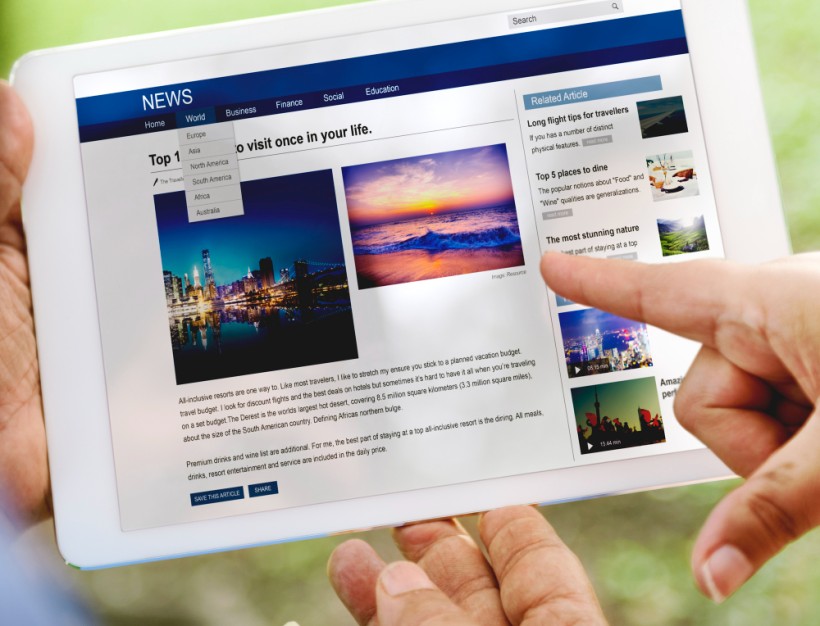Artificial intelligence (AI) can become part of your daily research workflow—from picking a topic all the way to writing up a paper.
The trick is not treating AI like a search engine or ghostwriter, but like a thinking partner. That means learning how to ask it the right questions, or prompts.
What makes a good AI research prompt
Before we dive into use cases, let’s agree on what makes an AI prompt work. A strong research prompt often has these components:
- Context: The subject, background, or setting (e.g., “studies on social capital in urban Africa”).
- Role: Who or what the AI should act like (e.g., “you are a journal reviewer”, “you are a policy analyst”).
- Task: The specific thing you want done (e.g., “compare frameworks”, “identify gaps”).
- Constraints: Boundaries you set (years, geography, discipline, word length).
- Output format: How you want the result (table, bullet list, short paragraph).
Here’s a comparison:
| Prompt type | Weak prompt example | Strong prompt example |
| Topic summary | Summarize papers on AI and education. | Summarize 2022–2024 studies on AI in education, grouping them by research method (quantitative, qualitative, mixed) and highlight trends by region. |
| Research gap | What gaps exist in digital labour research? | List five underexplored research questions on digital labour in Southeast Asia based on 2020–2024 literature, indicating why each is under-studied. |
When you use the stronger version, you give the AI tool something to reason with. You’re guiding its attention instead of leaving it to guess what you need.
AI prompts across the research lifecycle
Let’s look at how we can use AI prompts at every stage of research—from picking a topic to publishing results. Each phase has its own kind of question to ask. We cover all of these in our AI for Students Course.
Topic exploration
When you’re just starting out, the goal is to find gaps and frame questions. Instead of asking for random ideas, add context.
Examples:
- List five underexplored research questions on climate adaptation in African cities using recent papers (2021–2025).
- Compare how public health and urban planning scholars define “community resilience” and suggest a bridging concept.
- Identify emerging debates in digital labour research that have gained traction since 2022.
- Help me formulate a testable hypothesis for a study on [topic].
These kinds of prompts help you find novelty, not just information.
Literature review prompts
When you have a topic, the next step is scanning what’s been done. A structured prompt can help you map the field quickly.
Examples:
- Summarize 2023–2025 studies on AI in education, grouped by method (quantitative, qualitative, mixed).
- Extract theoretical frameworks most cited in studies on financial inclusion in Africa and note which regions are underrepresented.
- Compare the methodologies of these three abstracts [paste abstracts] to see where gaps exist.
- Summarize this paper’s main points as they relate to my topic [paste PDF].
- Outline the process for conducting a systematic review on [topic].
- Identify three theories that could support research on [theme].
This helps you move beyond simple summaries to real synthesis.
Research design and methodology prompts
You can also use prompts to check your design choices before data collection.
Examples:
- Critique this sampling strategy [paste text] for representativeness and bias.
- Suggest alternative mixed-method designs for studying gender differences in digital entrepreneurship.
- Draft five survey questions to measure [behavior] in [population].
- List ethical issues to consider when researching [sensitive topic or group].
- Describe pros and cons of using focus groups versus interviews for collecting qualitative data on [topic].
- Explain the steps in conducting a meta-analysis for [field].
- Suggest which statistical tests suit this data type and why.
- Suggest how to design a robust case study for investigating [phenomenon].
- Draft sections for an ethics application involving [target population].
- Provide best practices for managing a multi-institutional or cross-border study.
Good prompts here act as a second pair of eyes, helping you spot design weaknesses early.
Data analysis, interpretation, and visualization prompts
Once you’ve collected your data, AI can help you turn numbers into meaning and visuals. It won’t replace statistical reasoning entirely, but it can help you communicate results.
Examples:
- Analyze the third column in this CSV file [paste CSV] to determine the mean, median, mode, and standard deviation.
- Review this interview transcript and surface the major themes discussed.
- Explain the following regression results as if presenting to a policy audience.
- Interpret this correlation matrix for non-technical readers, focusing on relationships above 0.6.
- Suggest three possible reasons for a non-significant finding, referencing study design or measurement issues.
- Recommend effective ways to visualize [data type] for publication.
This saves time during the writing stage, especially when translating findings for mixed audiences.
Writing, publication, and style prompts
This is where AI becomes an editor and communication assistant. It can help polish tone, improve flow, and support publication tasks.
Examples:
- Draft an executive summary based on these sections [paste text].
- Rewrite this paragraph in the tone of a sociology journal.
- Condense this 250-word abstract to 150 words without losing key details.
- Rephrase this argument to emphasize causality rather than correlation.
- Generate a one-page grant proposal outline for a project on [topic].
- Generate an APA citation for this source [paste photo or screenshot of book cover].
- List pros and cons of publishing in open-access journals in [discipline].
- Offer techniques for improving clarity and conciseness in my writing.
The goal isn’t to outsource your writing entirely but to speed up revisions, ensure accuracy, and refine your presentation.
Peer review and critique prompts
Use AI to stress-test your paper before you submit it or respond to peer feedback.
Examples:
- Review this abstract using IMRaD structure and identify weak transitions.
- Assess if the data supports the claims made.
- Suggest how this paper could better state its contribution.
- Help me write a professional response to peer review comments.
This gives you an internal peer review before the real one.
Public communication and impact prompts
Finally, research only matters if people can understand it. AI can help you translate findings for wider audiences as part of research promotion.
Examples:
- Suggest ways to measure and communicate the impact of my research.
- Rewrite this summary for policymakers, focusing on recommendations.
- Create a 150-word press release in plain English.
- Draft three social posts explaining these findings in different tones: informative, provocative, and hopeful.
These prompts make your work more visible and useful beyond academia.
How to layer AI prompts for depth in research
Good researchers don’t stop after one question. They iterate. You can chain prompts to push for deeper thinking and stronger results.
Example flow:
- Summarize major findings from recent papers on remote work.
- Compare findings between developing and developed countries.
- Highlight contradictions or missing links between both contexts.
- Propose a theoretical explanation for those differences.
Layering prompts this way moves AI from summarising to synthesising. It’s how you turn machine output into academic insight.
Common pitfalls of using AI in research
Many researchers fall into the same traps when using AI. It’s easy to think of it as a shortcut, but that approach weakens your work.
- Treating AI as an oracle instead of a collaborator. If you don’t give it context, you’ll get shallow or misleading results.
- Copying text or citations without checking. AI often fabricates or misquotes sources, so treat every citation as unverified until you confirm it. Otherwise, you might end up with a $290,000 scandal.
- Ignoring transparency and ethics. If AI shaped part of your analysis or writing, say so. Hiding it creates problems for reproducibility and trust.
The point isn’t to replace your judgment, but to expand it. Always validate what AI produces, cross-check data or citations, and be transparent about its role in your process. We cover this and more in our live AI for Students Course.
Best AI tools to use for research
Here are a few AI tools worth exploring if you want to use them for research:
- Perplexity.ai – Combines conversational search with citations, useful for quickly finding verified academic sources.
- Consensus – Searches scientific research to extract and summarize evidence-based answers to questions.
- Elicit – Uses large language models to automate parts of the literature review process and find relevant papers with reasoning summaries.
- ChatGPT – Great for drafting prompts, summarizing papers, generating ideas, and refining writing tone.
- Semantic Scholar – Excellent for citation tracking and discovering highly cited or related works through AI-driven recommendations.
- Connected Papers – Visualizes the relationship between academic papers to help you map a research field.
- Research Rabbit – Lets you build and share visual collections of papers, showing how studies connect across authors and themes.
- Scite.ai – Evaluates how a paper has been cited—supporting, contrasting, or mentioning—giving context to citation quality.
- Scholarcy – Summarizes research papers and creates structured flashcards for faster review.
- Claude – Handles long documents efficiently and can process entire research papers for structured summaries.
These tools cover different parts of the workflow: discovery, review, writing, and synthesis. Using a mix of them can help you move faster and stay more organized across your research projects.
The future of prompt-based research
Prompting is now part of academic literacy, whether editors and professors like it or not. As AI tools improve, the researchers who get ahead won’t be the ones who use AI occasionally—they’ll be the ones who can guide it with precision.
Knowing how to build a good prompt will become as essential as knowing how to write a research question. Universities will teach it. Journals will expect it. And it will shape how we do collaborative work in the next decade.
Column works with companies to produce original research reports that combine data, storytelling, and design to build credibility and influence. If your organization wants to turn its insights into research that travels, learn more today.
Mo is the founder and CEO of Column, helping leaders shape public opinion through content and research. Connect with him on LinkedIn.





